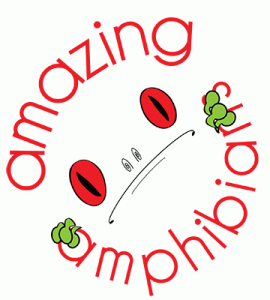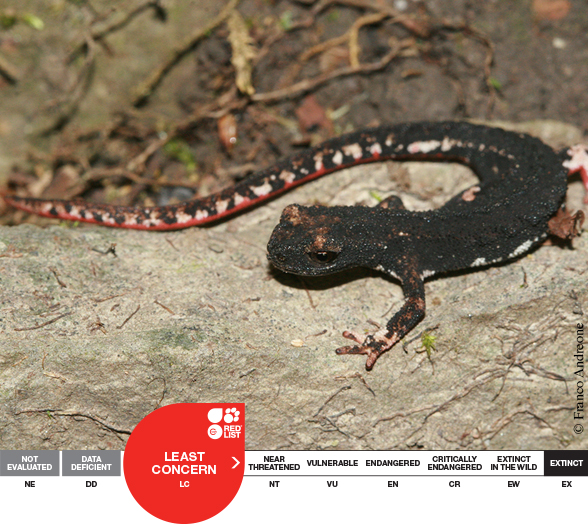 The Northern Spectacled Salamander, Salamandrina perspicillata, is a peculiar salamander belonging to the Salamandridae family. It is currently assessed as Least Concern (LC) by the IUCN Red List of Threatened SpeciesTM due to its extremely small Area of Occupancy, estimated to be only about 9 km2. There are a number of threats to the species in this area, including urban development, the use of the insecticide DDT for mosquito control, and drainage for agricultural purposes.
The Northern Spectacled Salamander, Salamandrina perspicillata, is a peculiar salamander belonging to the Salamandridae family. It is currently assessed as Least Concern (LC) by the IUCN Red List of Threatened SpeciesTM due to its extremely small Area of Occupancy, estimated to be only about 9 km2. There are a number of threats to the species in this area, including urban development, the use of the insecticide DDT for mosquito control, and drainage for agricultural purposes.
Formerly all the populations of this genus were believed to belong to a single species endemic of the Italian Peninsula, The Spectacled Salamander, Salamandrina terdigitata. Molecular investigations showed that in reality two different species are evident, the northernmost one deserving the name of Salamandrina perspicillata. Both the species of the genus carry out an almost secretive terrestrial life, mostly hiding within terrestrial refuges of the temperate woods where they live. Mating occurs on land, and the female is led by the male to pick up a spermatophore (a capsule of sperm produced by the male). During temperate Spring (usually the months of April and May), females reach the oviposition sites (which are usually represented by slow-running Apennine streams), and become aquatic. Then, they lay the eggs, which are usually attached to submerged objects, such as dead branches, stones and plants. Larvae develop in water until metamorphosis, which occurs after 2-5 months, depending on temperature and local conditions.
 |
The Northern Spectacled Salamander is threatened by a series of human actions, such as habitat alteration, habitat isolation (due to road-construction), and local water pollution. The presence of introduced fish (such as trout) in streams where they were originally absent may constitute a danger too.
Conservation actions include local protection of the egg-laying sites, and under-road tunnels to assure the passage of individuals during migrations. Several populations are included within protected areas.
Submit your observations of this species to iNaturalist and they will appear on this map. Learn more about this species on Amphibiaweb.
More Amazing Amphibians here.
Produced in partnership with:
Senior Partners |
|||
 |
 |
 |
|
 |
|||
Focal Partners |
|
 |
|
Affiliates |
|||
 |
 |
||
 |
|||
How to become an Amazing Amphibians partner:
Outlined below are the roles and responsibilities for the 4 different levels of involvement for potential partners. If your organization would like to be a part of the Amazing Amphibians program in either of these capacities please email amazing@amphibians.org.
Senior Partner – These partners will help with multiple aspects of the program, help facilitate the completion of several species profiles, publicize each Amazing Amphibian and will likely have a landing page for the program on their website. This level of partner will be leading in using their communication channels to gather additional information for the program such as images and data points for iNaturalist.
Strategic Partner – These partners will play an active role in creating species profiles, submitting at least three species profiles per year and actively use their social network to publicize each Amazing Amphibian. This level of partner will be active in using their communication channels to gather additional information for the program such as images and data points for iNaturalist.
Focal Partner – Partners tend to be active in a limited geographic area. This partner will submit at least one regional species profile per year and use their social network to publicize each Amazing Amphibian. This level of partner will be involved in using their communication channels to gather additional information at a regional level for the program such as images and data points for iNaturalist.
Affiliate – These partners are interested in promoting the program but might not be in a position to provide profiles. These partners will publicize each Amazing Amphibian through the social media outlets.







